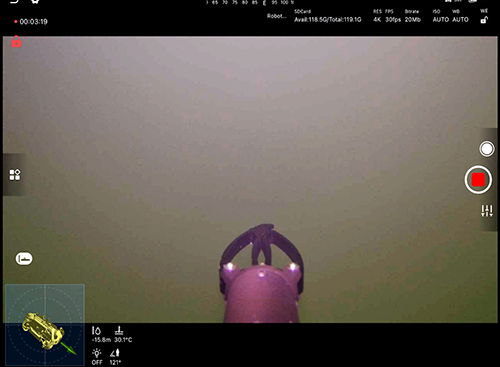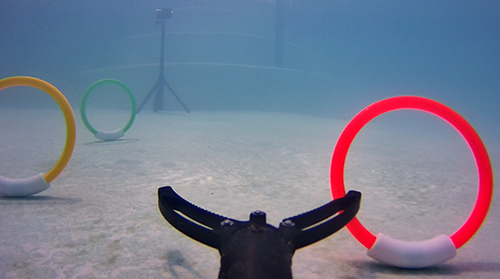Posey's Tips & Tricks
What Next-Generation VR Headsets Need Now
Upping the resolution is only one step in making VR headsets feel more natural to use.
If someone had asked me a year ago to name the one thing that VR headset manufacturers could do to make the metaverse experience better, my answer would have been to improve the display resolution. After all, visual quality goes a long way toward making virtual environments seem more realistic. And of course there is that pesky screen door effect.
The screen door effect is an illusion that stems from low pixel density. The wearer of a headset is able to see the empty space between pixels, thereby making it appear as though they are viewing the world through the mesh on a screen door. Headset manufacturers have adopted various tricks for eliminating the screen door effect, such as illuminating the space between pixels, but in the end there is just no substitute for better resolution.
Late last year, I acquired a high-end Microsoft Mixed Reality headset with a display resolution of 2160 x 2160 per eye. I occasionally have noticed a slight screen door effect while wearing that headset, but by in large the screen door effect is gone. However, even high-end headsets like the one that I use are far from perfect. There is one feature that manufacturers could introduce that would greatly improve the overall experience of wearing a headset.
One of the things that I have always noticed about people who are playing games or performing other activities in a VR environment is that they tend to move their head around a lot -- far more than what is typically done in the real world. The reason for a lot of the head movement is that current-generation mixed reality headsets offer almost no peripheral vision. Wearing a headset almost gives you tunnel vision. Gamers might often need to make exaggerated head movements in order to fully take in the world around them.
I'm not much of a gamer myself, so I never really thought all that much about the lack of peripheral vision until last fall when I was using a headset for an entirely different purpose. At the time, I was teaching an in-person course on underwater robotics. The course was based around the use of a small, robotic submarine. I was trying to demonstrate how robotics could be used to assist a diver who is trying to do a job underwater.
One of the unique challenges associated with operating a robotic submarine is that as the vehicle descends, it becomes increasingly difficult to see from the surface. It is nearly impossible to use line of site to operate the vehicle if it is more than a few feet down because the water distorts your view and prevents any high precision operations. The way that I get around that particular issue is to use a VR headset. The live video stream from the vehicle's onboard camera is fed into the headset along with all of the sub's instrumentation (depth, water temperature, pitch angle, etc.). Operating the submarine in this way takes some getting used to, but it gives you a feeling of being onboard the vehicle rather than being on dry land.
 [Click on image for larger view.] Figure 1. The robotic sub is 15.8 meters beneath the surface with the nose pitched down about 45 degrees.
[Click on image for larger view.] Figure 1. The robotic sub is 15.8 meters beneath the surface with the nose pitched down about 45 degrees.
The VR headset allows you to operate the vehicle in a much more precise manner. In Figure 2 for example, you can see an exercise from my underwater robotics class in which students were retrieving brightly colored dive rings from the bottom of a swimming pool using the submarine's robotic arm.
 [Click on image for larger view.] Figure 2. These dive rings are intended as a tool for helping children to learn how to swim, but they work well with the sub's robotic arm.
[Click on image for larger view.] Figure 2. These dive rings are intended as a tool for helping children to learn how to swim, but they work well with the sub's robotic arm.
As previously mentioned, using a VR headset makes it possible to operate the vehicle with extreme precision. As is the case with PC games however, tunnel vision is an issue. At one point during the course, I nearly hit one of the safety divers with the submarine. They were just to the right of the sub, and yet I had no idea that they were there because of the headset's tunnel vision.
At the beginning of this blog post, I said that there was one thing that headset manufacturers could do to greatly improve the metaverse experience. That one thing would be to design the headsets in a way that gives you a much wider field of vision.
I have no doubt that there are technical challenges associated with designing a VR headset that gives you peripheral vision. However, there are several PC vendors who sell curved monitors. The PC that I am working on right now as I write this article for example, is equipped with a curved Dell monitor. I have another PC that is connected to a curved HP monitor. The point is that while pricey, curved displays are a mainstream technology. Curved monitors don't really seem to do all that much to benefit PC users, but adding curved optics to VR headsets would be game changing. As long as a manufacturer could incorporate curved optics (for the sake of enabling peripheral vision) without sacrificing display resolution in the process, it would make the headsets far more usable and could go a long way toward eliminating the tunnel vision problem.
About the Author
Brien Posey is a 22-time Microsoft MVP with decades of IT experience. As a freelance writer, Posey has written thousands of articles and contributed to several dozen books on a wide variety of IT topics. Prior to going freelance, Posey was a CIO for a national chain of hospitals and health care facilities. He has also served as a network administrator for some of the country's largest insurance companies and for the Department of Defense at Fort Knox. In addition to his continued work in IT, Posey has spent the last several years actively training as a commercial scientist-astronaut candidate in preparation to fly on a mission to study polar mesospheric clouds from space. You can follow his spaceflight training on his Web site.